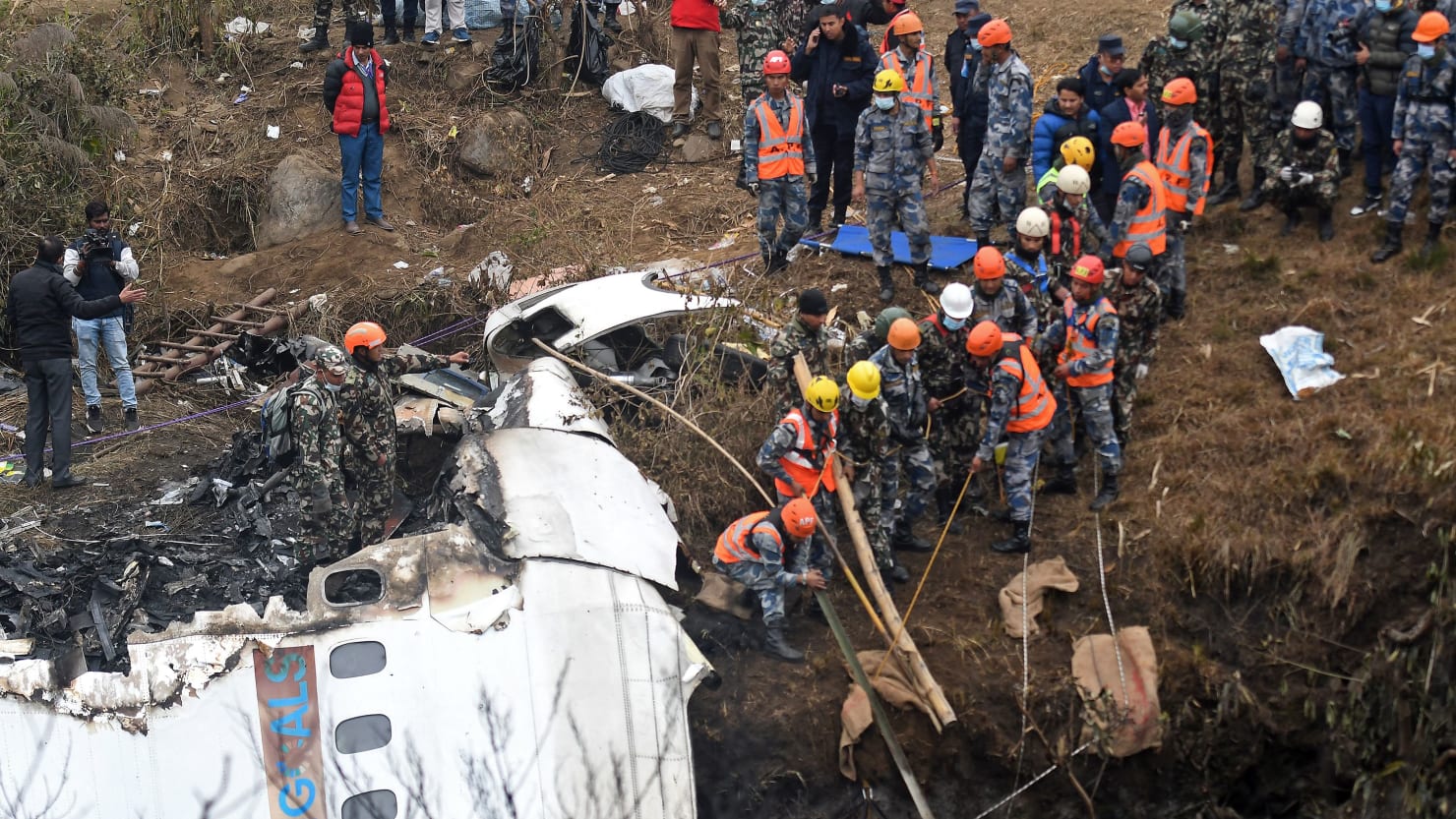Content warning: This story contains graphic descriptions and footage of a plane crash.
In June 2006, a tiny passenger plane crashed as it approached a local airport in Nepal for landing, hitting the ground “in a ball of fire,” witnesses told the Nepali Times. Its co-pilot, Dipak Pokhrel, was killed, along with two other crew members and six passengers.
On Sunday, more than 16 years after Pokhrel’s fatal crash, his widow, Anju Khatiwada, died when the plane she was co-piloting slammed into a gorge just outside of a newly built airport in Pokhara. Khatiwada was 44.
She had been “determined to become a pilot” after her husband’s death, a relative told The New York Times. Against her family’s wishes, Khatiwada began training for her license using an insurance payout from the crash. She was hired by Yeti Airlines in 2010, a company spokesman told Reuters.
Prior to Sunday’s crash, Khatiwada had racked up 6,400 hours of flight time, the spokesman said. The 24-minute route from Kathmandu, Nepal’s capital, to the tourist haven of Pokhara was one she had flown before.
“She was a brave woman with all the courage and determination. She’s left us too soon,” the same spokesman told CNN.
On Monday, Khatiwada’s body had not yet been pulled out of the gorge, but she was feared dead by authorities. Of the 72 people aboard the twin-engine ATR-72 aircraft, the remains of 69 had been retrieved over two days of search and rescue operations, making it Nepal’s deadliest plane crash in three decades.
The flight had carried 57 Nepalis, including four crew members, as well as five Indians, four Russians, two South Koreans, and one person each from Argentina, Ireland, Australia and France.
Four of the Indian passengers aboard the flight were friends, traveling around Nepal together from Ghazipur, a city in the northern Indian state of Uttar Pradesh, district officials said. One of them, Sonu Jaiswal, was identified as the hapless passenger who inadvertently streamed the crash on Facebook Live. Jaiswal, a 29-year-old father of two, had gone to Kathmandu to pray at a Hindu temple dedicated to the god Shiva, according to the Indian newspaper The Tribune.
Vishal Koswal, a close friend of the group, told The Guardian that he’d spoken to Jaiswal just a few hours before the crash over video. “Sonu was showing us the mountains around on the call and was clearly excited, so were we,” Koswal said. “He told me on that call that after landing in Pokhara, they would visit some temples there and then in the evening take a train back home.”
The 100-second clip, shared widely across social media, shows the moments before the Yeti Airlines crash, including Jaiswal in a yellow sweater as he peers out the window at the landscape below. As the plane jerks sharply to one side, the phone’s camera slips, though passengers can still be heard screaming. Flames then take over the screen.
Jaiswal’s father, Rajendra Prasad Jaiswal, told the BBC he was too shattered to watch the footage himself. “I have only heard about it from Sonu’s friends,” he said. “Our lives have come crashing down.” The elder Jaiswal was on his way to Nepal to identify his son’s body on Monday.
Another clip, taken from the ground by 33-year-old Pokhara resident Diwas Bohora, shows the doomed flight low to the ground as it tips sharply onto its wing and veers out of sight. “I was shocked,” Bohora said, according to the Associated Press. “I thought that today everything will be finished here after it crashes, I will also be dead.”
The cause of the crash remains under investigation. The plane’s flight data and cockpit voice recorders were recovered on Monday, a Yeti Airlines representative said. The Nepali government has appointed a five-member committee to conduct an inquiry into the crash.
Sunday marks Nepal’s second plane crash in the last 12 months, and one of more than 30 deadly crashes recorded by the Aviation Safety Network since the early 1990s. Since 2000, nearly 350 people have died in plane or helicopter accidents in the mountainous nation, where difficult terrain, unpredictable weather, and outdated fleets and navigation technology all contribute to flying challenges. An anonymous pilot who regularly flies the type of aircraft involved in Sunday’s crash from India to Nepal told the AP that the ATR 72-500 can be “unforgiving” if the pilot isn’t highly skilled or prepared for the region’s conditions.
This post originally appeared on and written by:
AJ McDougall
The Daily Beast 2023-01-17 02:11:00

